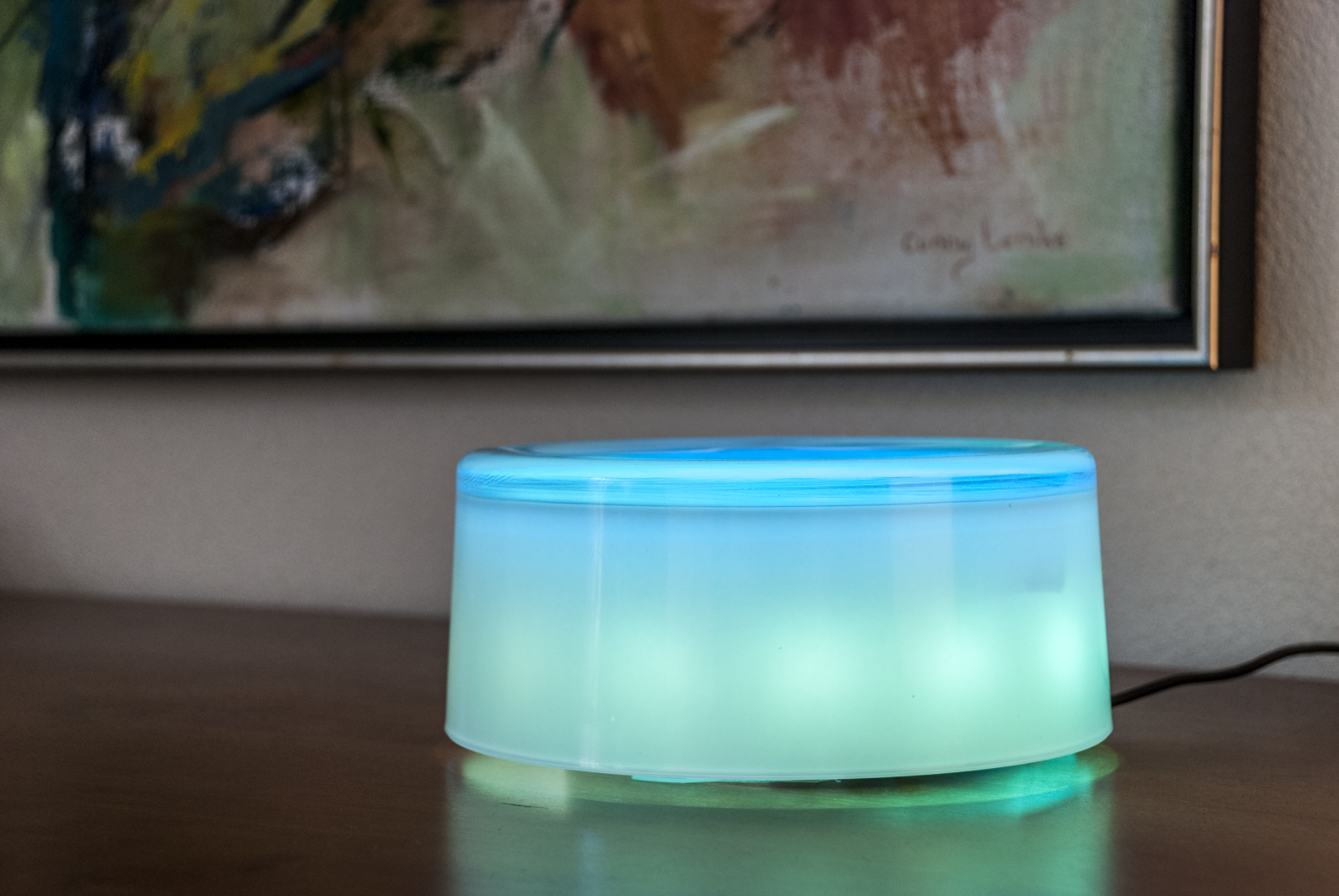
RemindLED: an unforgetting device from Harry Potter
2-3-2015

“A Remembrall is a tennis ball-sized glass ball that contains smoke that turns red when its owner has forgotten something. It turns clear once whatever was forgotten is remembered.” — Harry Potter Wikia
Seems useful, right? Put one of those on the kitchen table, and you’ll never ever forget to put out the garbage, buy new toilet paper, or pay the rent ever again. After some discussion, it was decided we should attempt to build one. Ingredients: a Raspberry Pi, an LED strip, a bit of software and… a bowl of glass.
This is the first prototype of RemindLED. RemindLED is a minimalistic table lamp, designed for placement in a central location in your home. Although very capable as a reading light, RemindLED’s time to shine is when it comes to reminding you of the things you are best at forgetting. Tell it about those things once using your smartphone, and RemindLED will light up in one of the many colors it can show in order to remind you that you really need to do that thing.
The fun thing is that these reminders are intended for, and can be dismissed by, anyone in your home. So emptying the recycle bin is not a task for the mindful one with the reminder on his phone, but for anyone who’s home when the alarm lights up. Dismissing alerts is done by waving your hand over the proximity sensor on top of the lamp. Which is also the way you can turn it on and off if you just need a light.
Under the hood
RemindLED is powered by a Model B Raspberry Pi equipped with a Wi-Fi module. It is wired to a WS2801-powered LED strip. These LED strips have the advantage that each LED can be addressed individually. The 48 RGB LED’s enclosed in the glass bowl are driven over high-speed SPI. Because the LED strip and the Pi work at different voltages, a bit of soldering is required in order to make this work. The Raspberry runs a server program written in node.js, on top of Raspbian (a Debian derivative specifically designed for the Pi). The daemon provides the necessary API endpoints for the iOS app, and also directly commands the SPI controller through a custom-written native module that directly interfaces with Linux’s SPI driver.
What’s next?
Let’s add a burglar alarm / temperature meter / stock ticker / $feature to it! Well, so much ideas, so little time. We might put this up on Kickstarter next time it rains on saturday. If I haven’t forgotten by then.